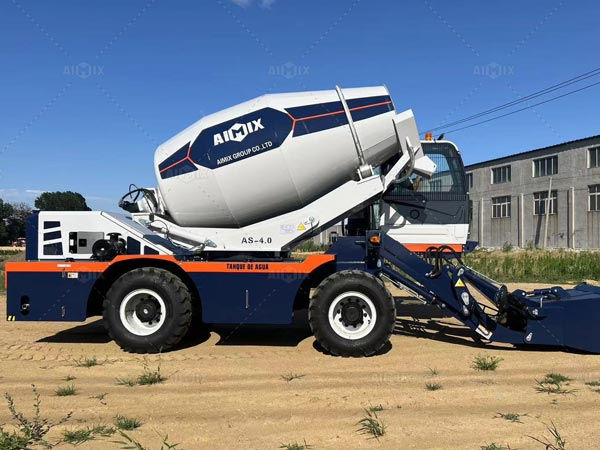Safety Precautions Should You Take When Using Different Concrete Mixers
- aimixglobal2024
- 2月18日
- 讀畢需時 3 分鐘
Working with concrete mixers requires strict adherence to safety protocols. Whether you are using a mobile, hydraulic, self-loading, or portable concrete mixer, each type has specific safety measures. This guide will provide valuable safety tips for each type of mixer, ensuring a safe and efficient operation on your construction site.

Importance of Safety Precautions
Safety precautions are crucial to prevent accidents and injuries. Concrete mixers are powerful machines that can pose significant risks if not handled correctly. Understanding and following safety guidelines not only protects you but also ensures the smooth progress of your project. Let's explore the safety measures for different types of concrete mixers.
Self-Loading Concrete Mixers
Self-loading concrete mixers combine the functions of a loader, mixer, and transporter. These self loading cement mixers are highly efficient but require strict safety measures.
Operator Training
Ensure the operator is well-trained and familiar with the machine's functions. Proper training reduces the risk of accidents and ensures efficient operation.
Visibility and Awareness
Maintain clear visibility around the mixer. Ensure the work area is free of obstacles and other workers are aware of the machine's movements.
Regular Maintenance
Perform regular maintenance checks on the machine. Address any mechanical issues promptly to prevent breakdowns and accidents.
Portable Concrete Mixers
The portable concrete mixers are convenient and easy to move. They are perfect for small projects but come with their own set of safety concerns.
Secure Setup
Set up the mixer on a stable, level surface. Secure the mixer to prevent it from moving during operation.
Electrical Safety
If using an electric portable mixer, ensure the power cord is in good condition. Avoid using the mixer in wet conditions to prevent electrical hazards.
Personal Protective Equipment
Always wear personal protective equipment, including gloves, safety glasses, and a dust mask. This protects you from dust, debris, and accidental splashes.

Mobile Concrete Mixers
Mobile concrete mixers are versatile and easy to transport. They are ideal for small to medium-sized projects. However, their portability comes with specific safety concerns.
Stability and Positioning
Ensure the mixer is positioned on a flat, stable surface before operation. This prevents tipping and ensures smooth operation. Always lock the wheels to prevent movement during mixing.
Protective Gear
Wear appropriate protective gear, including gloves, safety glasses, and a dust mask. These protect you from dust, debris, and accidental splashes of wet concrete.
Maintenance and Inspection
Regularly inspect and maintain the mixer. Check for any signs of wear and tear or mechanical issues. Address any problems immediately to prevent accidents.
Hydraulic Concrete Mixers
Hydraulic concrete mixers use a hydraulic system to power the mixing drum. They offer a consistent and powerful mixing action but require careful handling.
Hydraulic System Safety
Ensure the hydraulic system is in good working condition. Check for any leaks or damage before use. Hydraulic fluid can be hazardous, so handle it with care.
Loading and Unloading
Follow the manufacturer's guidelines for loading and unloading the mixer. Overloading can strain the hydraulic system and cause malfunctions.
Emergency Procedures
Familiarize yourself with the emergency stop procedures. Knowing how to quickly stop the machine can prevent accidents and injuries.
Conclusion
Using concrete mixers requires strict adherence to safety precautions. Whether you are working with mobile, hydraulic, self-loading, or portable concrete mixers, each type has specific safety measures. Ensuring stability, wearing protective gear, regular maintenance, and proper training are crucial to safe operation. By following these guidelines, you can prevent accidents and ensure the smooth progress of your project. Stay safe and happy mixing!




留言